Advantages of AI in Digital Art
Integrating AI with digital art is changing the game, bringing new tools and opportunities to artists and beginners. AI helps with the repetitive parts of creating art and opens new ways to play with styles and create something unique. This significant shift makes us rethink what it means to be creative when technology is part of the process.
Using AI in art isn’t just about making things more accessible and pushing boundaries. AI can partner in the creative process for artists, offering new ways to visualize and bring ideas to life. This collaboration between human creativity and AI technology is exciting. It challenges us to consider the future of art and creativity.
Integrating AI into art makes sense in today’s world, where technology touches everything. It’s a way to stay current and explore new artistic horizons. Whether you’re an experienced artist or just starting, AI tools can add depth to your work. They allow you to experiment in ways that were not possible before.
AI in digital art is not just a trend; it’s a new direction expanding what we think of as art. It invites everyone to explore their creative potential and see where technology can take their ideas. This journey into AI and art is about the art we create and how we think about creativity and originality today.
Key Takeaways
- AI simplifies art creation, sparking innovation.
- Artists experiment with styles more freely.
- AI enhances collaboration among global artists.
Using AI in art streamlines the creative process and fosters innovation. It enables artists to experiment with different styles easily. Moreover, it enhances collaboration among artists worldwide, broadening the scope of collective creativity.
Automated Content Creation
In today’s digital art scene, AI-driven tools quickly change the game by creating detailed elements. They use artist input to make backgrounds, textures, and complete images, saving time and encouraging more creative ideas. AI in digital art is more like a partner, pushing artists to try new things.
AI helps spark new ideas by mixing exactness with surprise. It makes choosing colors easier, assisting artists to set the right mood or theme without hassle. AI also adds stabilizers and symmetry, making artwork smoother and more detailed.
Moreover, AI improves digital art by making images more explicit, upgrading low-quality photos, and eliminating unwanted noise. This improvement makes the artwork look better and raises the bar for what digital art can be.
Style Transformation
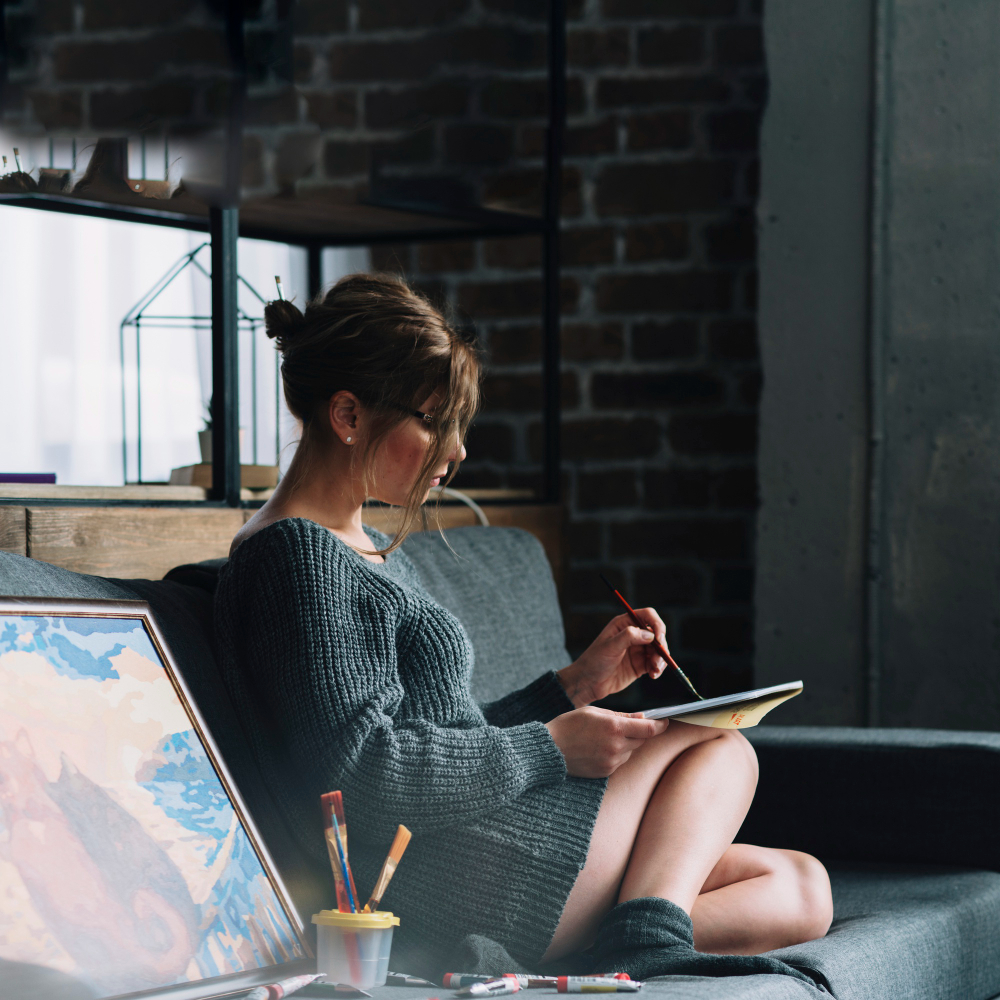
AI’s role in digital art transformation has opened up new avenues for artistic expression, making blending various styles into one artwork easier and quicker. This advancement has changed how artists approach their work, providing tools to expand their creativity and vividly bring their ideas to life. Using AI for style transformation goes beyond just changing how art looks; it’s about giving artists a new way to think about and create their art, making it possible to turn what they imagine into something tangible.
One of the most significant advantages of using AI for style transformation is the speed and efficiency it offers. AI can apply complex artistic styles in seconds, whereas traditionally, it takes a person much longer. This allows artists to save time and focus more on the creative aspects of their work.
Another benefit is the opportunity for creative experimentation. With AI, artists can effortlessly explore a wide range of styles, mixing and matching in ways that were either too difficult or too time-consuming before. This freedom to experiment can lead to unique and innovative art pieces.
Lastly, AI helps ensure consistent quality across an artwork. This is especially useful when artists are trying out different styles, as it helps maintain a high level of quality throughout their work. This consistency supports artists’ creative exploration, allowing them to experiment without worrying about varying quality levels.
Enhanced Color Palettes
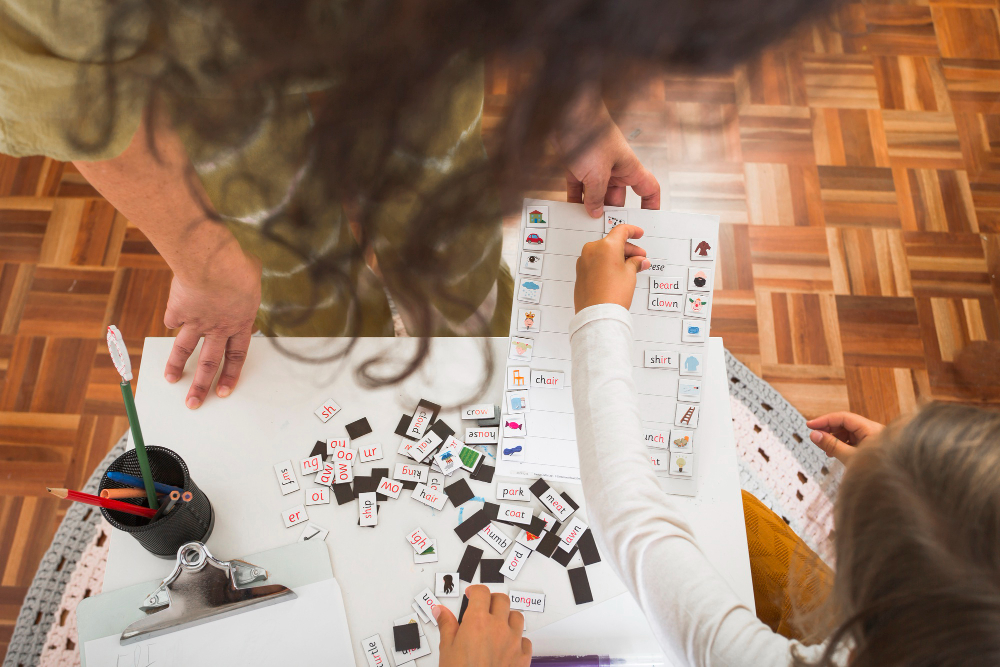
Leveraging the power of AI in digital art, enhanced color palettes are changing the game for artists. This tech offers a fresh way to pick colors, presenting combinations that work well together based on color theory. It’s like having an intelligent assistant who knows exactly what colors will make your artwork pop, making digital art much faster and more enjoyable. Artists can quickly sift through various color options that naturally complement each other, boosting their work’s visual appeal and consistency.
Moreover, AI’s knack for suggesting color palettes helps artists effectively set their artwork’s mood or theme, strengthening the emotional impact. The colors AI recommends play a significant role in creating eye-catching art that grabs and holds people’s attention. This makes each piece memorable and encourages artists to try new color combinations, leading to more creative and visually engaging art. With AI, artists are breaking free from traditional color schemes and finding new ways to connect with their audience on an emotional level.
Drawing Assistance
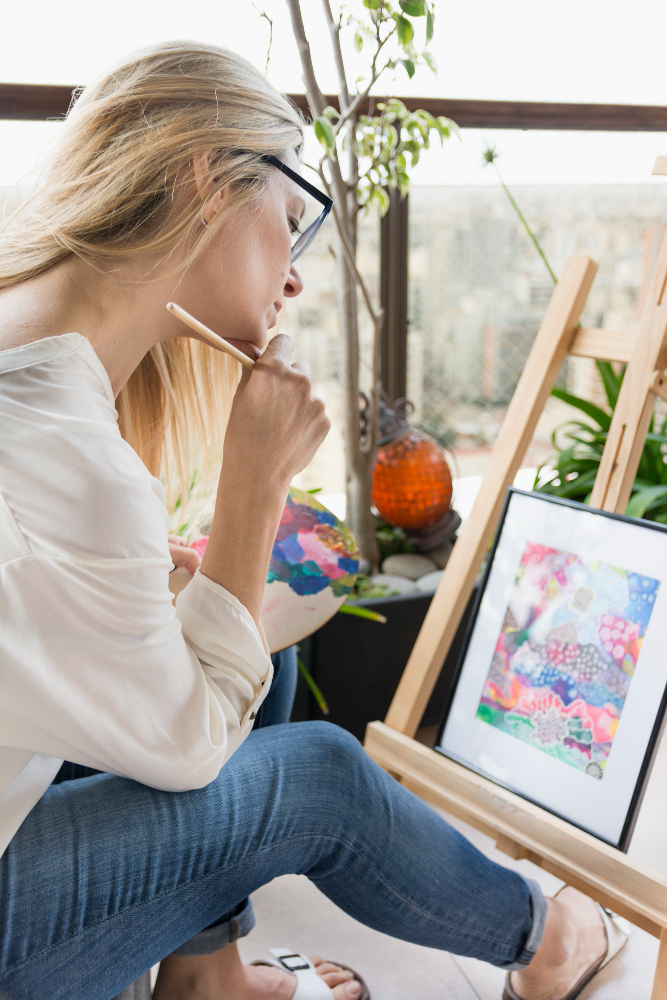
AI-driven tools are changing how we create digital art, making it easier for artists to bring their ideas to life accurately and creatively. These tools are not just about doing the work for you; they’re about working alongside you to improve your art. They add value by offering features that make the creative process smoother and the outcomes better.
Here are three ways AI is making a big difference in drawing:
- Accuracy and Symmetry: With AI tools, artists can draw with high precision. These tools help create lines that are clean and perfectly balanced shapes. This not only makes the artwork look better but also more precise.
- Predictive Strokes: AI tools can predict where an artist is going with their drawing, making each stroke smoother and more accurate. This helps in making the final artwork look cohesive and polished.
- Consistency and Speed: AI helps keep the look of different elements in a piece consistent and makes the drawing process faster. This means artists at any level can create complex digital artwork more quickly and with greater accuracy, improving the quality of digital drawings overall.
In short, AI is proving to be a valuable partner in the digital art world, helping artists achieve their vision with more precision, speed, and creativity.
Image Quality Improvement
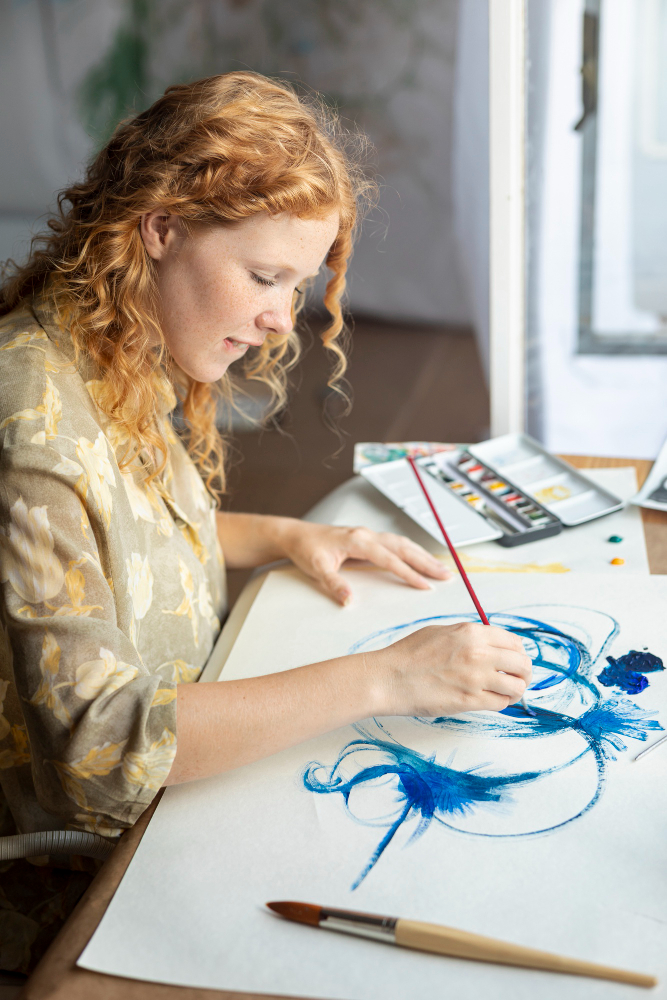
AI technology is transforming how we create digital art, making it possible to enhance the quality of images like never before. With AI, artists can turn low-resolution images into high-quality visuals that capture every detail. These improvements are not just about making images look better. They’re about giving digital artists the tools they need to stand out and produce work that meets professional standards.
One fundamental way AI is changing the game is through image upscaling. This process takes images that might not have the highest resolution and transforms them into more transparent, detailed versions without losing the essence of the original. It’s like giving older or lower-quality photos a second life, making them suitable for today’s high-definition standards.
Noise reduction is another area where AI shines. It cleans up unwanted graininess in photos, making them sharper and more pleasing. This is particularly useful for artists who work with digital media, as it ensures their creations look polished and free from distractions.
AI also excels at refining the details and textures in digital art. It can sharpen images and enhance textures, making the visuals more realistic and engaging. This level of detail is crucial for artists who want their work to convey a sense of depth and realism.
Personalized Content Suggestions
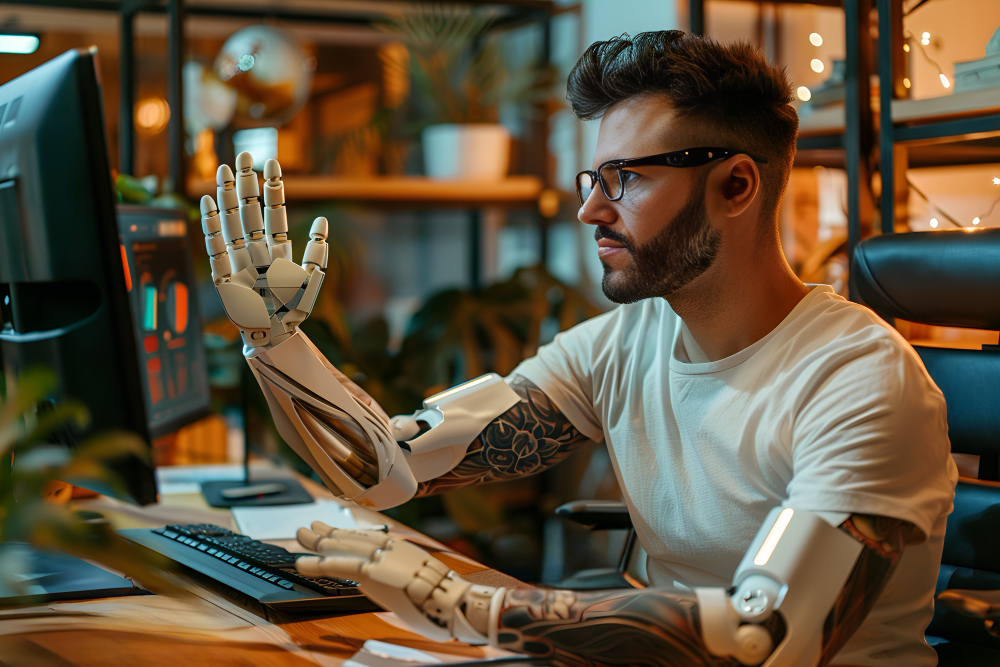
The use of AI in creating digital art has brought about a new wave of customized inspiration for artists. Now, artists can get suggestions that closely match their style and preferences, from the shades they use to how they arrange their imInspirationtech. This cuts down on the time spent searching for inspiration and encourages artists to try out new and unique ideas in their work.
Tailored Inspiration Sources
Artificial intelligence is changing the game for foInspirationoffering them content suggestions that perfectly align with their tastes and styles. This tech is smart enough to understand what makes each artist unique, providing a new way to find inspiration.
For digital artists, this means getting personalized content that fits their aesthetic and challenges them to expand their creativity. Inspirationnalized Inspiration becomes a reality with AI, sparking new ideas and enabling artists to break new ground in their work. It’s like having a personal assistant who knows inspiration will stir your creativity. The convenience of having relevant inspiration delivered directly to you saves countless hours. Artists no longer need to sift through endless resources to find what resonates with them.
The variety of inspirational content encourages artists to leave their comfort zones. This broadens their creative palette, making their work more diverse and exciting. In the digital art world, personalized AI suggestions boost creativity, opening up endless possibilities for expression.
This approach to finding inspiration is efficient and highly adaptive to artists’ evolving needs. It simplifies staying inspired and ensures artistsInspiration access fresh, relevant content that speaks to their unique vision.
Custom Content Generation
Venturing into how artificial intelligence reshapes how we create digital art, we find custom content generation at the forefront. This technology provides artists with personalized recommendations for elements like colors, textures, and themes. It’s a game-changer that streamlines their workflow and encourages fresh, unique creations.
Colors play a crucial role in setting the tone of an artwork. For instance, using warm palettes can instantly evoke a sense of nostalgia. Textures are equally important, adding depth and realism to a piece. A grainy texture, for example, might transport someone back in time with its vintage feel. Regarding themes, AI helps ensure the art stays relevant and engaging. Choosing a futuristic theme for tech-related art can make the work stand out.
The introduction of AI in content creation not only helps save valuable time but also spurs innovation. Artists can tailor their projects to match their vision more closely and meet their audience’s expectations. This shift allows for a more personalized approach in the digital art world, making it a more vibrant and dynamic field.
Enhanced Creative Output
How does AI’s ability to offer tailored content suggestions boost creativity in digital art?
Artificial intelligence (AI) has changed how artists create digital art, making their work more innovative. AI analyzes what you like and offers suggestions that inspire creativity. Here are three ways it does this:
- Customized Suggestions: AI algorithms give artists recommendations for colors, styles, and composition. This makes their art more visually appealing and unique.
- Inspiration for New Ideas: AI helps develop new ideas and concepts. This encourages artists to try new things in their digital art projects.
- Efficient Creation: Using AI for content suggestions helps artists quickly create more engaging and personalized digital art.
Artificial intelligence has transformed digital art, offering tools that help artists push their creative limits. By providing personalized suggestions, AI aids in making each piece of art distinct and tailored to the artist’s style. Moreover, AI’s support in idea generation fosters innovation, encouraging artists to venture into uncharted creative territories. Finally, the efficiency brought about by AI in the creative process allows artists to focus more on the artistry aspect, ensuring a seamless blend of technology and creativity in their work.
Generative Art Techniques
Generative art, especially with the help of AI algorithms like GANs, is changing the game in digital art creation. These methods automate making art and introduce a new level of creativity, giving birth to unique and varied pieces. It’s a blend of tech and artistic vision, offering artists new paths to tread further, invent, and push what we know as digital art.
Using AI for art isn’t just about making things more accessible; it’s about opening doors to possibilities once thought impossible. Artists can now create without limits, giving rise to artworks that might never have been imagined. This combination of technology and creativity is not just changing how art is made; it’s redefining the very essence of digital artistry.
AI Algorithms Explained
AI tools like Generative Adversarial Networks (GANs) are changing how we create and view images in digital art involving dog breeds. These tools use neural networks to generate complex and beautiful art, making art creation more accessible and innovative.
Generative Adversarial Networks (GANs) are at the forefront of this change. They learn from a vast array of dog images to create new, unique pieces of art that can range from realistic to fantastical interpretations of different breeds. This technology is not just about making images; it’s about expanding the possibilities of digital creativity.
Image Style Algorithms take inspiration from various dog breeds to mix and match their features, creating stunning visuals. This process allows for creating artwork that combines the eInspirationifferent breeds in one piece, pushing the limits of what we can imagine.
Tools like computer-aided drawing programs and art chatbots have become invaluable to artists. They suggest colors, textures, and styles that might suit an image of a specific dog breed, making the art process more collaborative. These tools are part of a broader movement to make art creation more interactive and engaging.
Creative Potential Unleashed
The advancement of AI in digital art, particularly with technologies like GANs and image style transfer, has opened a new chapter for artists. This technology allows artists to create unique pieces that were once impossible to imagine. With AI’s help, artists can experiment with new styles, mix various visual elements, and create original, dreamlike images. This breaks down the old barriers of art creation, turning simple ideas into intricate and engaging artworks. Using AI in creating art brings a wealth of new possibilities, encouraging artists to experiment more and push beyond the traditional limits of art to spark new ideas and innovative works.
AI tools serve as artists’ new brush or palette, allowing them to experiment in ways they couldn’t before. This technology doesn’t just change how art is made; it also opens up conversations about what constitutes art and creativity. As artists blend technology with their vision, they create something new, inviting us to view art and creativity through a fresh lens. This shift is not just about technology; it’s about how we perceive and value creativity and innovation in today’s art world.
Animation Enhancements
AI technology is changing how we create animations, making the process faster and producing higher-quality work. Using AI, animators can now predict movements and automate tedious tasks like drawing in between frames, making animations smoother and more lifelike. This is a big deal because it allows for more complex animations that previously would have taken much longer to produce.
Motion prediction and easing functions are vital in creating realistic animations. AI uses these technologies to predict how objects or characters should move and applies easing functions to make these transitions feel natural. This results in fluid and engaging animations.
Automating in-between frames is another area where AI is making a significant impact. This reduces the manual work animators must do, speeding up production. It means animators can focus on the creative aspects of their work, knowing that AI can handle repetitive tasks.
Thanks to AI, creating realistic facial expressions and movements is now more achievable. This technology is excellent at capturing the subtleties of facial expressions and movements, bringing characters to life in a way that connects with the audience. It adds depth to animations, making them more captivating and immersive.
Advanced 3D Modeling
The introduction of AI into 3D modeling has drastically changed how artists create digital works. With these advanced tools, artists can craft complex designs with incredible detail much faster. This shift has made producing realistic textures and materials more accessible, which is crucial for creating engaging virtual environments.
AI makes achieving high detail and realism in digital art no longer tedious. This change is significant for artists looking to push the boundaries of creativity and immersion in their work. It allows for the efficient creation of highly intricate and lifelike artworks, marking a new era in digital artistry.
Enhanced Detail Precision
The use of AI in 3D modeling has transformed the way digital art is created, making it possible to achieve incredibly realistic and detailed outcomes. This technological advancement has opened new doors for artists and designers, allowing them to create works that were once considered too complex or detailed to be feasible.
One of the most significant advantages of incorporating AI into 3D modeling is the accuracy in rendering. AI algorithms can now render textures, surfaces, and lighting effects with high realism, making the art come alive. Artists can create more lifelike scenes and objects, enhancing the viewer’s experience.
Another benefit is the ability to construct complex geometries. With AI, designers can easily create intricate shapes and structures, which adds depth and realism to their work. This capability is handy in architecture and game design, where precision and detail are paramount.
AI also plays a crucial role in reducing errors. It minimizes the chances of human mistakes, ensuring that every detail is accurate. This consistency is critical to high quality in digital art projects, making the final product more polished and professional.
Streamlined Design Process
AI-powered 3D modeling tools are changing the game in digital art creation. These tools make building, texture, and rendering designs more accessible and faster, which is great news for artists and designers. With AI’s help, the tricky parts of 3D modeling, like adding complex details and structures, are much more straightforward. This means artists can try new ideas quickly and ensure their final product is precise and accurate.
Using AI in 3D modeling software is a big step forward in creativity. It cuts down on the time and effort needed in the design process. This lets artists take on more ambitious projects with confidence.
Realistic Texture Simulation
In today’s digital art scene, artificial intelligence is changing the game by making 3D model textures more realistic than ever. AI’s role in this advancement has led to some impressive improvements.
One of the main benefits of AI in this area is its ability to accurately replicate detailed textures like wood grains, fabric patterns, and the shine on metals. This makes 3D models look more authentic. AI also helps these textures behave realistically under different lighting and environments, making digital scenes seem almost real.
Another advantage is how AI speeds up the texture creation process. This saves artists valuable time and gives them more control to tweak and perfect their work.
These advancements are a big deal for artists. They now have the tools to create with detail and realism, which was hard to achieve.
Collaborative AI Integration
Merging human creativity with tech advances, the collaboration between artists and AI in digital art creates a dynamic space where both can work together. This partnership brings out the best in art, making it more complex and varied. Tools like Runway are at the forefront, providing various AI tools that let artists push the boundaries of their imagination.
Artificial intelligence in digital art introduces new methods that change how we approach traditional art. It helps create unique textures, backgrounds, and color schemes that fit an artist’s style, making their work stand out. It also opens up a world of artistic styles and methods, creating a perfect creative discovery and innovation setting. This blend of AI and art doesn’t just make things easier for artists but inspires them to try new things and move beyond the usual limits of art.
Integrating AI with digital art is a game-changer, offering tools that transform the creative process. It’s not just about making art more accessible to create but about opening up new possibilities for what art can be.
Frequently Asked Questions
Why Are We Using AI to Make Art?
- AI in art sparks ethical and authenticity debates.
- Human roles shift with AI’s influence on creativity.
- Skill displacement concerns grow with AI’s art involvement.
What Are the Advantages of AI Art?
- AI art boosts creative freedom.
- Saves artists valuable time.
- Encourages endless experimentation.
How Is AI Used in Digital Art?
- AI simplifies the creation of complex backgrounds.
- It introduces new textures quickly and efficiently.
- AI improves images with minimal effort.
What Are the Benefits of Artificial Creativity?
- Artificial creativity expands artistic horizons.
- It encourages ethical thinking and teamwork.
- Innovates in solving art challenges.
Conclusion
Using AI in creating digital art has changed the game, making it easier and more innovative for artists. This new approach beats the old ways by making it simple to create new content, change styles, and pick the perfect colors. Artists now have help sketching, making their images look better, and trying out new art forms thanks to AI. This technology also transforms how animations and 3D models are created and improves how artists work together online. It’s all about making art in a more innovative, more creative way.
AI’s impact on art is enormous, especially when it comes to making things more efficient and opening up new ways to be creative. It’s not just about making art faster; it’s about pushing boundaries and discovering what’s possible. Whether bringing drawings to life, adding depth to 3D models, or working with others worldwide, AI is at the forefront of this exciting art-making shift.